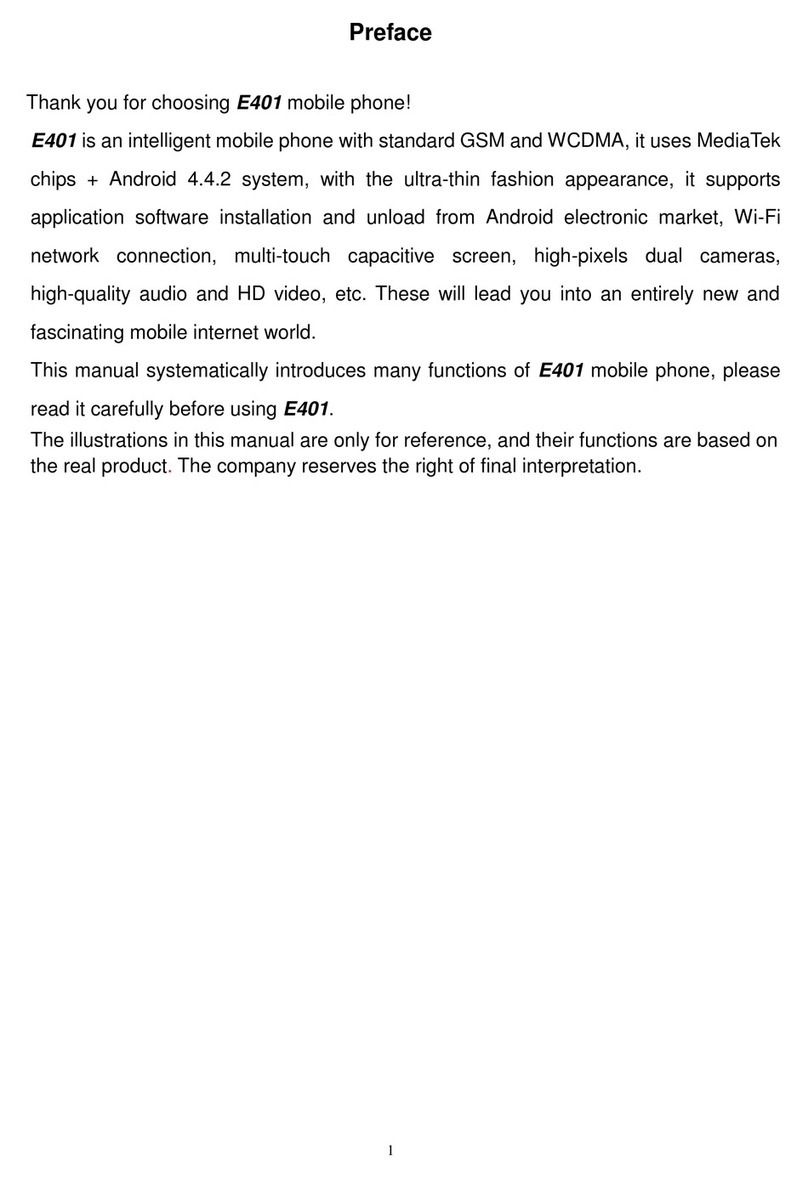Nokia Mobile Phones NHX-4N Guide

PAMS Technical Documentation
Original 01/98 Copyright 1998 Nokia Mobile Phones. All rights reserved.
NHX–4N
DISASSEMBLY &
TROUBLESHOOTING
INSTRUCTIONS

PAMS
Technical Documentation
NHX–4N
Disassembly & Troubleshooting Instructions
Page 2 Original, 01/98
AMENDMENT RECORD SHEET
Amendment
Number Date Inserted By Comments

PAMS
Technical Documentation NHX–4N
Disassembly & Troubleshooting Instructions
Page 3
Original, 01/98
CONTENTS
Page No
Disassembly instructions Page 4. . . . . . . . . . . . . . . . . . . . . . . . . . . . . . .
General Trobleshooting Page 6. . . . . . . . . . . . . . . . . . . . . . . . . . . . . . . . .
General Troubleshooting Page 7. . . . . . . . . . . . . . . . . . . . . . . . . . . . . . . . .
Logic fault Page 8. . . . . . . . . . . . . . . . . . . . . . . . . . . . . . . . . . . . . . . . . . . . . .
Receiver fault Page 9. . . . . . . . . . . . . . . . . . . . . . . . . . . . . . . . . . . . . . . . . . .
Transmitter fault Page 10. . . . . . . . . . . . . . . . . . . . . . . . . . . . . . . . . . . . . . . . .
Audio fault Page 11. . . . . . . . . . . . . . . . . . . . . . . . . . . . . . . . . . . . . . . . . . . . . .
Display or keyboard fault Page 12. . . . . . . . . . . . . . . . . . . . . . . . . . . . . . . . .
Call set–up fault Page 13. . . . . . . . . . . . . . . . . . . . . . . . . . . . . . . . . . . . . . . . .

PAMS
Technical Documentation
NHX–4N
Disassembly & Troubleshooting Instructions
Page 4 Original, 01/98
Disassembly instructions
2) Remove screw
covers (3 pcs) with
screwdriver
1) Remove the
antenna
3) Remove back
cover screws (3 pcs)
4) Remove
back cover
5) Disconnect:
battery connector (1),
microphone connector (2),
and earphone connector (3)
with tweezers
6) Remove
battery
7) Remove
chassis screws

PAMS
Technical Documentation NHX–4N
Disassembly & Troubleshooting Instructions
Page 5
Original, 01/98
8) Remove
transceiver
module
9) Turn around,
Loosen the light guide carefully
from both sides of the PCB with
flat headed tool
10) Lift display carefullly
Remove screws (3 pcs)
11) Chassis and module
can now be separated

PAMS
Technical Documentation
NHX–4N
Disassembly & Troubleshooting Instructions
Page 6 Original, 01/98
General Trobleshooting
The object of troubleshooting is to define the faulty module block, and then to
locate the faulty component. The troubleshooting diagram has been planned so
that the fault, whatever it is, can be found as simply as possible.
The flow charts give you the overview of the blocks. The purpose is that you
proceed through the flow diagram so that, if your answer is YES for the asked
question, go straight to the next level, but if your answer is NO, go the sub-
branch.
Required servicing equipment:
– PC for Service Software
– Power supply (2.0A)
– Digital multimeter
– Oscilloscope
– Signal generator
– Spectrum analyzer
– RF cables
– Service cable SCN–3
– RF–adapter AAT–4X
– Test jig JBS–3N
– RS232/MBUS adapter

PAMS
Technical Documentation NHX–4N
Disassembly & Troubleshooting Instructions
Page 7
Original, 01/98
General Troubleshooting
START
Logic fault
Receiver fault
Will turn into
local mode ?
Receiver OK ?
(SINAD OK)
Transmitter fault
Transmitter operating
(RF power OK) ?
Earphone level/
modulation Earphone level or
modulation fault
END
Display or keypad fault
Is display/keypad
module working ?
Call set–up faultCall set–up ?
FAIL
OK
OK
OK
OK
OK
OK
FAIL
FAIL
FAIL
FAIL
The General troubleshooting chart shows
the most common fault areas These seven
fault types can be used to define the pos-
sible fault.
(nom, max)

PAMS
Technical Documentation
NHX–4N
Disassembly & Troubleshooting Instructions
Page 8 Original, 01/98
Logic fault
Logic fault
Check clock signal
of CLKMCU ~3.3 Vpp
XRES ~ 0 V
Check;
– D201 pins 51 (CLKMCU), 21 and 53
(VL2), 67 and 68 (VREF), 12, 30,
50 and 58 (GND)
– XPWROFF line (COL0) load
– If OK, change D201
Check MBUS connection
d.c. voltages;
– D201/9 TXD ~3.3 V
– D201/10 RXD ~3.3 V
– X100/2 M2BUS ~3.3 V
Above lines are to show
Check d.c. voltages
of N101;
– pin 17 ~1.75 V if
VBAT ~4.8 V
– pin 1, 5, 22 ~VBAT
Voltages always 3.3 V
Check;
– solderings of MUUMI N101
– loading of supply voltages
– if OK, change N101
– Check load on VL2,
VA and VREF lines
Power drops off or does
not assume local mode
VL, VL2, VA and
VREF ~3.3 V or only
momentarily on
N101/14 XPWROFF line
at least 1 microsec. pulse to 3.3 V
3 sec. intervals (momentarily)
Check;
N101/13 PWRONX
line 0 V pulse (momentarily) – PWR button
– V930
– ROW0
to 3.3V all the time.
OK
FAIL
OK
OK
FAIL
FAIL
FAIL FAIL
OK
OK
OK
FAIL

PAMS
Technical Documentation NHX–4N
Disassembly & Troubleshooting Instructions
Page 9
Original, 01/98
Receiver fault
TX spectrum
Replace duplex
filter Z660
AF signal at
N370/9 (DAF) OK?
Transmitter
fault
Simplex sens.
(TX off)
Receiver fault See earphone level fault
OK
OK
FAIL
FAIL
OK
Check: V310, V311
V313, V314,
N101/4
FAIL FAIL
VCCR, VREF,VSYN
OK?
RXINJ
OK at V341
collector
FAIL
OK
OK
RX–VCO
oscillating
1. IF
at N370/16
OK?
FAIL
OK
Check operation
of V380
FAIL
Check: solderings of
Z660, Z321, Z350
operation of V320
FAIL
IF level
after Z350 OK
Check: voltage of N370/4,
components C378, R371,C377,
if OK replace N370
Check: operating voltage of
G530
VCO–freq FAIL
Check: resistance through
N820/3, R521, R522, R523
voltage N820/4,14
Connections of R530, C532
VCTCXO operating voltage
and frequency = 14.85 MHz.
OK
OK
Check: RXINJ level at V341
collector (5–10 dBm), V341
operating voltage and bias, C341
Check SCLK, SDAT and SLE
lines.
Z370, L370,

PAMS
Technical Documentation
NHX–4N
Disassembly & Troubleshooting Instructions
Page 10 Original, 01/98
Transmitter fault
Transmitter fault
Transmitter
frequency
OK
590<Pout<980 mW
Check Z660 TX–pin
soldering. If OK replace
Z660
FAIL
OK
OK
FAIL Power OK after
tuning OK
Vpc N601/1
OK
FAIL
2.5–3.5 V (level 1,2,3)
FAIL
TXINJ level
6–12 dBm after
Z601
FAIL
Check: R647, V642,R660
C643, VTSYN, TXE, TXC
R641, R655, R649, R640,
V650, V641, V640
VCO output
level –3...+3 dBm OK
Replace G430
FAIL TX–VCO
freq and spectrum
FAIL
OK
(level High) at C642
OK (TXE OFF)
Buffer V430
output freq. and
spectrum OK
(TXE OFF)
OK
OK
Check: resistance through N820/17,R421, R422, R423
Connections of R430, C432.VCTCXO operating
voltage and freq. =14.85 MHz. Check SCLK,SDAT
and SLE lines.
FAIL
N601 freq.
and spectrum OK
when duplex filt.
not connected
Check: V430 operating
voltage and bias, C440
R440, C443
OK Check soldering of duplex
filter Z660. If OK replace
filter.
FAIL
Check: C631, C641, C660
C642, C634, C635, C608
C625, C602. If Ok
replace N601.
FAIL
Buffer V440
output freq. and
spectrum OK
(TXE ON)
Check: V440 operating
voltage and bias, C450,
R455, C454, TXE
OK
Check operation of V430
and V440
OK

PAMS
Technical Documentation NHX–4N
Disassembly & Troubleshooting Instructions
Page 11
Original, 01/98
Audio fault
XMIC
TXMUX+TXAAF TXBP
TXATT
MICAM COMPR PREEM TXLP
SUM
RXAAF EXP
PIN 27
DAF
RXATT
EARPHONE LEVEL / MODULATION LEVEL FAULT
SIGNAL LEVELS OF AUDIO CIRCUiT N701
MICTRI
MIC
TXTRI+TXPOSTFIL WTRFIL+WPOSFIL
RXTRI RXMUX+AAFILDEEMP+RXFIL
FILOEXPI
EAMPBO
EXPO
VOL ACC
EARP
HF CONTROL
ATTOCOMI COMO
EMPI
VOLI
ATTO
COMI
COMO
EMPI
PIN 46
PIN 47
PIN 49
PIN 50
PIN 51 PIN 55
MOD
FILO
EXPI
EAMPBO
EXPO
VOLI
PIN 28
PIN 29
PIN 30
PIN 32
PIN 34
XEAR
EAR
EVGND
EARP
EARM
EARM PIN 38
PIN 37
50 mVrms
50 mVrms
50 mVrms
70 mVrms
70 mVrms
170 mVrms
180 mVrms
180 mVrms
100 mVrms
330 mVrms
330 mVrms
120 mVrms
120 mVrms
Signal levels are measured by oscilloscope and input signal frequency is 1 kHz. Transmitted signal deviation is 2.3 kHz.
Signal levels are measured by oscilloscope. Received signal audio frequency is 1 kHz, deviation 5.7 kHz and power level –53dBm.
LIM1 LIM2
EMPO LPIN
EMPO
LPIN PIN 52
PIN 53 95 mVrms
95 mVrms
125 mVrms
EWCI PIN 31 100 mVrms
XEAR PIN 35 130 mVrms

PAMS
Technical Documentation
NHX–4N
Disassembly & Troubleshooting Instructions
Page 12 Original, 01/98
Display or keyboard fault
Display or keypad fault
Lights OK ?
Display does’nt work
Check pins
Pin 33 V5OUT ~–6.5 V
D201/29 LIGHTS
line at + V with
lights on
Check load in lights line
(R920, R921, R922, R923, R924)
Check operation of
switches V43 and V45
Pulses to 3.3V
on COL0–4 lines at
~50 ms intervals
Check COL0–4 lines from
keyboard to D201
ROW0–2 lines are to carry 3.3V
and pulses to 0 V at ~50 ms
intervals when corresponding
key depressed
clock signals Check components;
– C900, C901
Check soldered joints of D100
Check R901–904 and C902, C903
Check;
Display foil solder joints;
D100/40/LCDRES 3.3V
KEYBOARD
FAULT
Pin 38 VCI ~3.3V
Pin 37 C1+ 3.3V/7.2kHz
Pin 35 C2+ 6.6V/7.2kHz
Check pin
Pin 31 V5 ~–5.0V
OK
FAIL
OK
OK
OK
FAIL
OK
OK
OK
FAIL
FAIL
FAIL
FAIL

PAMS
Technical Documentation NHX–4N
Disassembly & Troubleshooting Instructions
Page 13
Original, 01/98
Call set–up fault
Call set–up fault
Phone will not
assume SERV – mode
Subscriber data OK ?
RSSI operative ?
Data
detection of N701
operative ?
Replace N701
Check subscriber data and country codes and
Check RSSI tunings and tune if needed.
Inspect the signal path from test point DAF
to N701/27
Check also other lines to N701.
D0000123
correct them if needed.
Check N370/12/RSSI–line and the operation
OK
FAIL
OK
FAIL
FAIL
OK
OK

PAMS
Technical Documentation
NHX–4N
Disassembly & Troubleshooting Instructions
Page 14 Original, 01/98
This page intentionally left blank.
Table of contents
Other Nokia Mobile Phones Cell Phone manuals



















